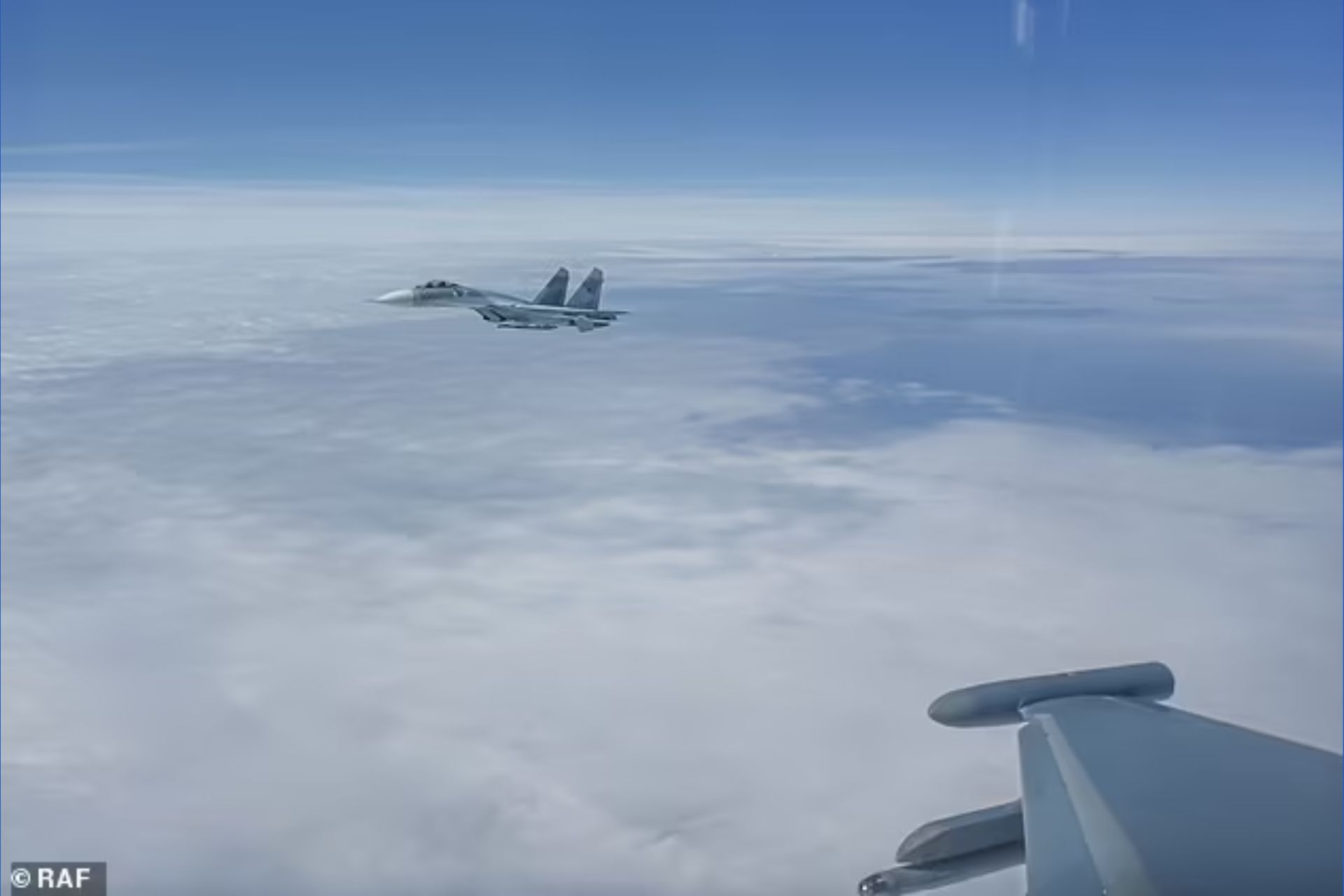Breaking news
Significant Increase in NATO Scrambles against Russian threats in the Baltic.
Several Russian planes have been intercepted in recent days by three distinct NATO fighter squadrons from Germany, Italy, and Spain, launched respectively from bases in Latvia, Poland, and Lithuania. Disturbing images shared by NATO's air command show Eurofighter Typhoons and F-18s intercepting what appeared to be Ilyushin-IL20 spy planes and Antonov AN-12 cargo planes flying over the Baltic Sea.
Follow Army Recognition on Google News at this link

German Eurofighter Typhoon intercepting and monitoring a Russian Spyplane Ilyushin-IL20M (Picture source: NATO)
These overflights are daily, as indicated by NATO; however, they are not illegal or prohibited. An international air corridor is intended to allow the passage of military and civilian planes, and it is located above the seas. However, the frequency of these scrambles has significantly increased, and there are different types of aircraft involved. Today, there are many more spy planes than there were a few years ago. This comes as a NATO source stated last month that the movements of alliance jets to intercept Russian planes approaching allied airspace over the Baltic Sea region increased by 20 to 25% in the first quarter of 2024.
An aggressive posture fueling Kremlin rhetoric
A NATO Air Command statement indicates that an increase in Russian activity in the Baltic Sea skies is expected in June, with NATO ships participating in scheduled exercises.
The Baltic Operations exercise, or BALTOPS, takes place from June 7 to 20 and will see more than 50 warships, 25 aircraft, and 9,000 military personnel from 20 countries engage in maritime exercises. These exercises are held annually, but this year’s will be the largest ever of their kind, due to growing security concerns in the Baltic region following Russia’s invasion of Ukraine. Sweden is participating in the exercises for the first time since joining the security bloc—a decision that some analysts believe has turned the Baltic Sea into a “NATO lake,” a significant blow to the Kremlin. BALTOPS 2024 will feature the largest gathering of amphibious forces and mine-hunting units in the exercise’s history, according to a U.S. Navy statement. Exercise officials stated that if Russia's brutal aggression in Ukraine has taught us anything, it is that we must be able to adapt to the combat environment. This is a priority for me and for my U.S. and NATO command.
In Russia, large-scale exercises are viewed as evidence of more threatening behavior from NATO. Before the launch of BALTOPS, the head of the FSB Border Service, Vladimir Kulishov, claimed that NATO had increased its intelligence activities in Russia’s neighboring member states and that the alliance was developing scenarios to conduct military operations against Russia.
One of Russia’s leading Baltic experts, Nikolai Mezhevich, gave an alarming interview to the Moscow newspaper Tsargrad in which he claimed that Western politicians were ready to trigger a Third World War right where the first and second began, referring to the possibility of a NATO attack on the Russian enclave of Kaliningrad.

Russian SU-27 flying alongside of British RAF Typhoon near Baltics country landslide (in the back ground) (Picture source: French MoD)
A Shift in Threats Since 2022
Unlike in the past, Western pilots rarely detect Russian fighter jets or strategic bombers approaching allied airspace, with most interceptions now involving surveillance aircraft or occasionally transport planes.
The exact reason for Russia's changed behavior is unclear, but it is assumed that Moscow needs its bombers and fighter jets in Ukraine, as the fighting there is increasingly intense. NATO states that Russian military planes often do not transmit a transponder code indicating their position and altitude, do not file flight plans, and do not communicate with air traffic controllers.
Following Russia's large-scale invasion of Ukraine in February 2022, the Western military alliance has bolstered its presence along its eastern flank, sending more fighter jets and establishing ground-based air defenses.
NATO also deployed additional fighter jets to Romania after repeated Russian strikes on Ukrainian infrastructure near the alliance’s southeastern border. Earlier this year, NATO launched its largest exercise (Steadfast Defender) since the Cold War, involving some 90,000 troops.
The exercises aim to rehearse NATO's execution of its regional plans, detailing how it would respond to a Russian attack. Nato is currently acting like in a pré-war period.


























